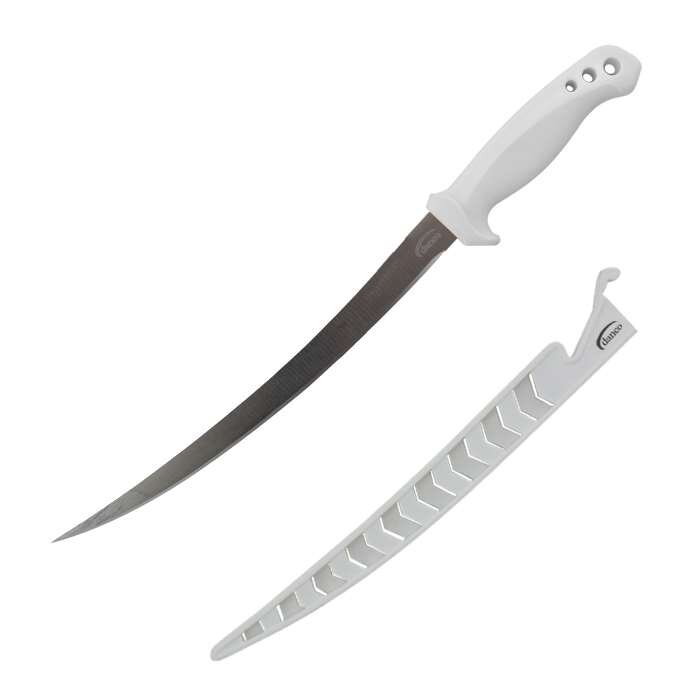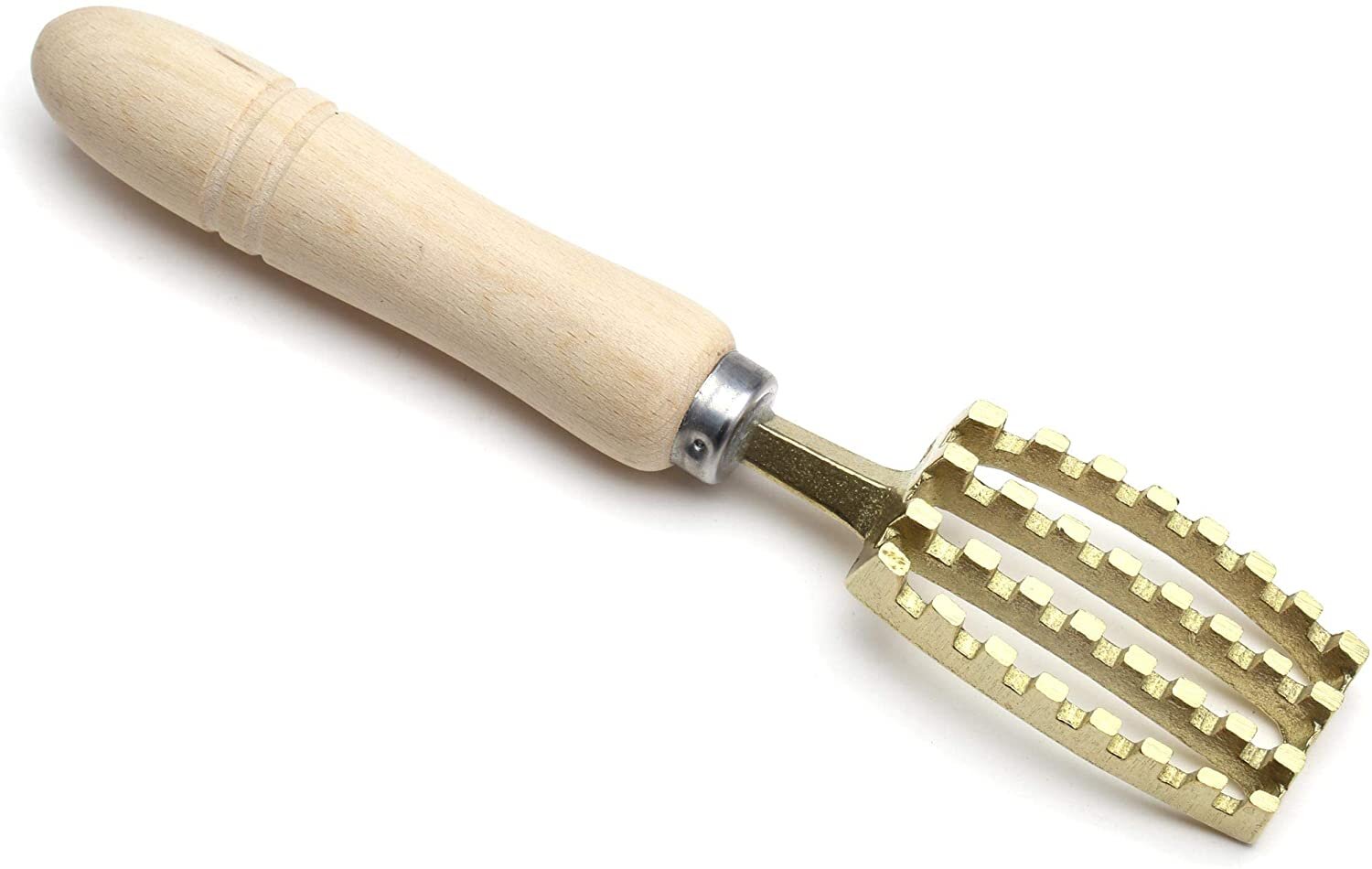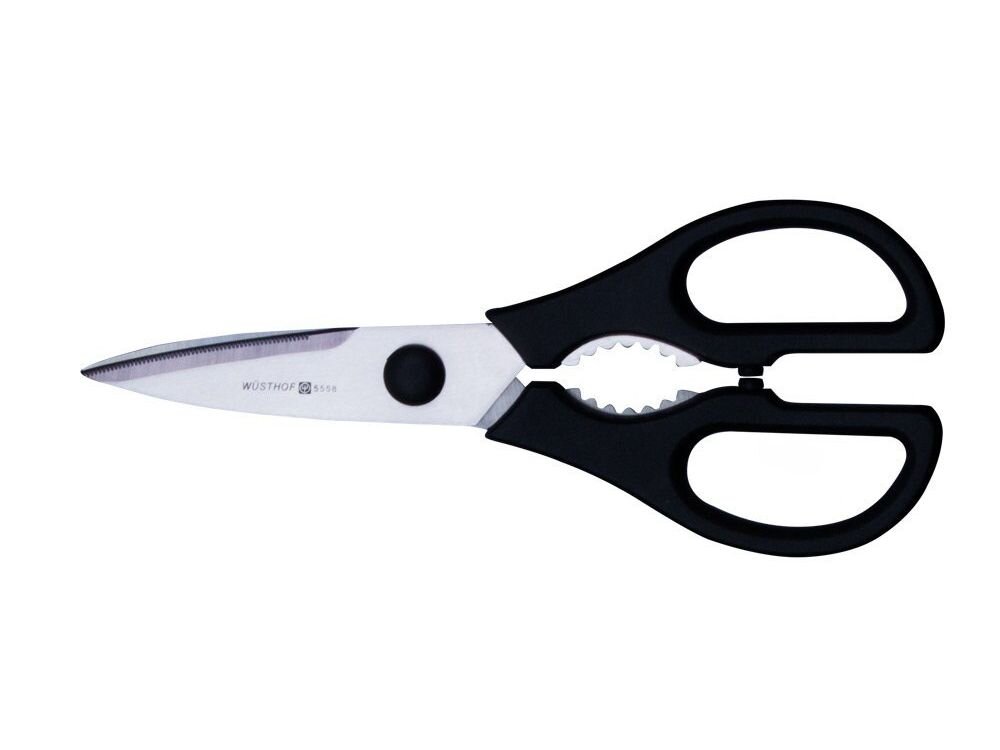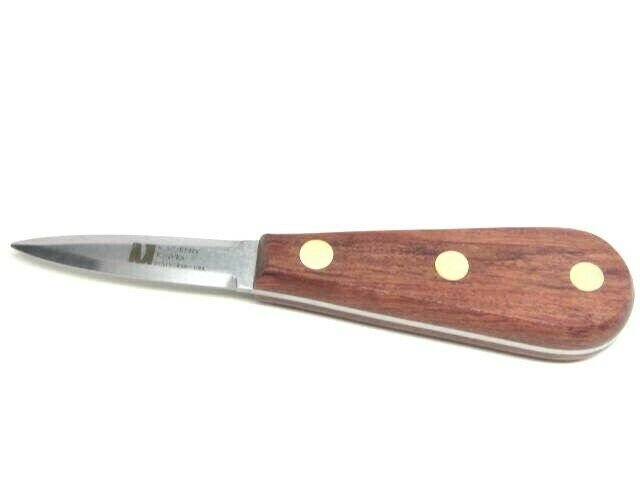Tools for Preparing Seafood
People often think that you need fancy seafood specific tools to cook seafood at home. You don’t. You probably already have all the kitchen utensils, cookware, tools, etc. you need in your home for preparing a delicious seafood meal. However we do have some favorite seafood tools that make preparing seafood at home easier and as seafood nerds, we enjoy a nice kitchen tool. For all the tools and listed below, we will also suggest alternatives that you may already have at home.
A sharp Knife
This is probably one of the most important tools you can have in your kitchen (whether preparing seafood or not). There are many different types of knives and ultimately it comes down to what you are using the knife for and your personal preference to determine which knife is right for you. The most important thing is that your knife is sharp. This will make cutting your fish much safer and much easier. Below are a couple of different types of knives that are useful when preparing seafood, particularly for cutting fish. You do not need each type of knife, though maybe knife enthusiasts would disagree (by the way we are not knife experts).
Fillet Knife
Fillet Knife: Probably one of the most popular types of knives for filleting a fish, is the aptly named fillet knife. They tend to be very thin, flexible, and sometimes are curved. They work well for removing the skin from a fillet and getting close to the bones when filleting. Your fillet knife doesn’t have to be expensive or fancy as long as you keep it sharp. You can pick up very inexpensive knives at bait and tackle shops or fishing supply stores.
Boning Knife
Boning Knife: Boning knifes and filet knives are pretty similar from what we can tell. However boning knives, while thinner than most kitchen knives, tend not to be as thin as a fillet knife blade and are not always flexible (though they do make flexible boning knives). They also tend to be straight vs curved (though once again, there are exceptions). Boning and fillet knives are used to cut around bones, not typically through them. They are very practical for filleting and removing skin.
Deba
Deba: A Deba is a Japanese style knife used to cut fish or meat. The Deba is heavier than the fillet or boning knife and is sharp and thin at the front and a bit thicker towards the handle. It is versatile and can be used to fillet but is also particularly good at cutting through the bones of the fish such as to remove the head or cut through the ribs (you want to do this with the thicker back part of the knife). We’ve been told that you can also use the Deba to score or crack open crab claws or legs.
Chef’s Knife
Chef’s Knife: A chef's knife is a multi-purpose knife. It is designed to perform well at many differing kitchen tasks, such as chopping vegetables or slicing meat, rather than excelling at any one in particular. Most of us own a chef’s knife and they are great for seafood. Chef’s knives come in various sizes, we recommend when filleting using a knife that feels comfortable to you, seems appropriate for the size of fish you have, and you feel you have control with.
A Fish Spatula
A Fish Spatula
In our honest opinion, a fish spatula is the best, and really only, spatula you need. Not only is it specifically designed for getting under and easily handling your delicate filet of fish but it is also incredibly versatile. It’s thin edge and flexible blade make it perfect for flipping a pancake, burger, or crab cake! The slots allow hot oil to drain right though and its thin edge also works well for cutting a fillet of fish in half, to serve when cooked. We also like that the blade is a bit longer than the typical spatula which is helpful when dealing with delicate fillets that threaten to break apart. If you don’t have a fish spatula any regular spatula works however.
Fishbone Tweezers or Needle nose Pliers
Fishbone Tweezers
Needle Nose Pliers
Fishbone tweezers are a pair of kitchen tweezers designed for removing the pin bones from a fillet of fish. They are inexpensive and are way easier to use than trying to pull the bones out with your hands. However, needle nose pliers work equally well and are easy to find at any hardware store (we recommend keeping a separate kitchen pair).
A fish Scaler
A Fish Scaler
Scaling a fish can be messy, scales will fly everywhere. We recommend doing it outside if possible, or in a trash bag if you are doing it inside. There are many tools you can use to scale your fish. The back of your knife is an easy tool that you should already have on hand. A spoon is another great option or you can even use a clam shell to scale your fish (a tip we learned from Jacque Pépin,)! But our favorite tool is a fish scaler. It just seems to grip the scales a little better and work more efficiently. Since scaling the fish isn’t our favorite task, anything that speeds up the process is a win for us.
silicone tongs
Silicone tongs are not necessary but they are useful. We prefer them when dealing with fish because they tend to be more gentle than regular metal ones and they also won’t scratch your non-stick pan. However if you don’t have silicone tongs, any pair of tongs will do. They are great for turning over pieces of fish while pan searing or picking up hot shellfish.
Kitchen Scissors
Kitchen Scissors
One of our favorite kitchen tools for seafood, kitchen scissors are great for so many tasks. In particular, they are very helpful when dealing with a whole fish. Use them to trim the fins (so you don’t get impaled), cut out the gills, cut through thin bones such as around the ribs when filleting, or open up the belly to remove the guts without slicing open the stomach. They are also very useful when picking lobster or crabs. You can slice through the knuckles on a lobster or the legs on a crab to access the hard to get meat. Some kitchen scissors also have a nut cracking part between the handles that you can use to crack the thicker shells of lobsters and crabs, like the claws. They are also great for peeling shrimp and slicing herbs. If you don’t have kitchen scissors, you can use a knife for most of these tasks.
Lobster picks and crackers
Lobster cracker
another type of lobster cracker
lobster picks
Lobster picks and crackers are great to have on hand for eating lobsters and crabs. The crackers are used to crack the shells open and the picks are great for extracting meat from the tight crevices. They are pretty inexpensive and can be found at most seafood markets, grocery stores, or even some local hardware stores. If you don’t have picks you can use a small fork and nut crackers or your kitchen scissors are a great alternative to the lobster crackers. You could also use a small hammer to crack the shells or crack them with a knife.
A Large Cutting Board
You want a cutting board that is large enough that you can fit the entirety of whatever you are cutting on it. For example if you are cutting a whole fish, you want the whole fish to fit on the cutting board and not be sliding off the edge. Cutting boards come in different materials. The most popular are plastic and wood. For working with raw fish, we prefer the plastic because its durable, inexpensive, easy to clean, and generally won’t absorb bacteria as easily as wood. Its recommended that you have a separate cutting board for seafood vs raw vegetables or fruit.
Oyster and clam knife
Oyster Knife
Clam Knife
An oyster knife and clam knife are essential for shucking oysters and clams. The clam knife is thin with a flat blade for sliding between the closed shells and the oyster knife is generally thicker and sturdier with a pointed tip for boring into the shells hinge to pop it open. We aren’t going to suggest an alternative knife here because it could be dangerous to use a sharp knife to open an oyster or clam. But if you don’t have an oyster or clam knife, you could try a flat head screwdriver or your could try the oven method. Place the oysters or clams in a hot oven for just enough time (a few minutes) for the shellfish relax and their shells to open slightly. You can then easily slide a butter knife in to cut the abductor muscles.
Kitchen or Bar Towels
Kitchen towels
When the chefs we work with show up at our events to cook, they always have a stack of kitchen or bar towels with them. They use them for everything from wiping up a mess, to a pot holder, to holding a clam when shucking, to placing under their cutting board to prevent it from slipping around. These are not your decorative dish towels that hang nicely in your kitchen, these are inexpensive, come in bulk packages, and are something that you won’t mind wiping down a fish with.
Rubber Gloves
Rubber gloves
We want to start off by saying that you don’t need rubber gloves to prepare seafood at home. Often you see chefs using them at events or in their restaurant kitchens because of food safety rules related to commercial kitchens and serving the public. However, as long as you wash your hands, it is perfectly safe to handle raw seafood at home without gloves. That being said, if you don’t like the slick feel of a whole fish or raw squid, rubber gloves can be very helpful. They also prevent any fish related smells from getting on your hands which can be nice for easy cleanup.


















